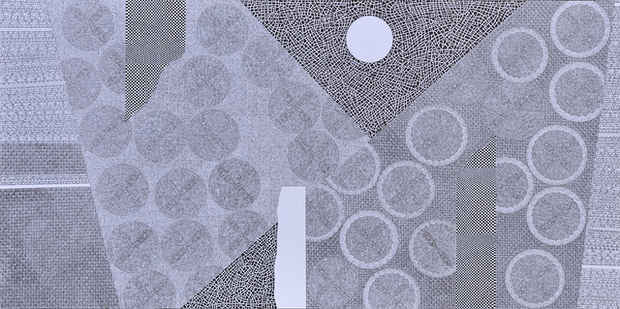“Lights and Shadows” Exhibition
Onishi Gallery

This event has ended.
Onishi Gallery presents “Lights and Shadows,” the inaugural group show of Onishi Project, an art management division of Onishi Gallery and a showcase for emerging, mid-career and leading artists around the world. Onishi Project connects artists and art patrons across the globe, and enables patrons to locate original paintings, sculptures and photographs at affordable prices in the international art market.
“Lights and Shadows” features three Japanese artists who each work in different media to create monotone-colored pieces. Through pen drawing, installation, and photography, these artists present images that play with the shadows of their creations. The dance between light and shadow that each of these artists explores raises questions about and beyond the search for beauty in darkness; they probe notions of abundance and emptiness, permanence and temporariness, and the weight of material creation and its lasting impression.
The title of this show reflects Japanese aesthetics that find beauty in hidden places, and each of the pieces in this show appreciates this interest. Just as light gives shape to material through its shine, so too does shadow pattern space through the image of the material’s absence. Light and shadow create complete images through reflection of each other and interaction with the space around them.
A native of Kumamoto prefecture, Wataru Matsumura has been an active artist since 1967. Using pen and paper, Matsumura creates intricate and time-consuming pieces that evoke the textile patterns of both Japanese kimonos and western fabric designs.
Akira Sakata, former Vice-Director and now Adviser at the Kumamoto Prefectural Art Museum, reflects on the influence of the Kumamoto Castle in Matsumura’s works. He notes that "The castle’s black and white walls embody the spirit and world of ‘black ink’ in Matsumura’s drawings. While I feel things and quantity in Western black, I feel the heart and spirit in Matsumura’s black. Furthermore, the ‘shape’ in Matsumura’s work is based on Japanese traditional shape — what is called ‘the shape of things.’ This form was passed down in Japanese culture through people’s daily lives.
I feel that the density of [Matsumura’s] paintings as well as his spirit have intensified in his work much like a Buddhist mandala. His minute and masterfully controlled technique of pen drawing creates a small and mysterious universe, alien like the moon and the places of fairy tales."
Shinichi Nakahara is an artist and an interior and product designer, specializing in two-dimensional, three-dimensional and space representational artworks. He began studying painting at the age of 15 under the prominent painter, Susumu Fukuyama, founder of the Keisho Art Association in Japan.
Nakahata learned classic and modern techniques of oil, watercolor, and tempera painting from Fukuyama, and in 1981, began working for a furniture manufacturer. He has exhibited in Italy, the Republic of Korea, Taiwan, and Japan.
The site-specific installation that Nakahara has created for this exhibition is entitled, “Accumulation Rebirth,” and was created after the earthquake in Japan in 2011. He puts his heart and soul into the piece for wishing recovery and rebirth in the affected areas.
Tetsuro Sato graduated from Nihon University in 1969 to become the Art Director and photographer of the Toppan Printing Company. In 1987, Sato established the Sugarl Studio, and since then has presented a series of shows in Tokyo and Osaka.
Hengao may be translated into English as “funny face,” a phrase that captures the work Tetsuro Sato has created for this exhibition. In it, Japanese models pose for his camera holding a variety of glassware such as lenses and vessels. Inspired by the Japanese phenomena purikura where young girls take pocket-sized photos of themselves, Sato takes the place of the photo booth to capture their poses. He prefers not to edit or distort the film, but lets abstraction occur through use of props and body language.
By having the models’ gazes mediated through glass, Sato’s work explores (with a sense of humor) the traditional power structure between viewer and subject. In front of a black background, limbs, eyes, and facial expressions reflect, refract and transcend traditional photo-portraiture. Instead of a passive one-way relationship, Sato encourages the viewer to seek out the beauty in the model, which is often exaggerated to strange proportions. Like the girls in Yoshitomo Nara’s work, the end result is alien, humorous, and wistful.
Media
Schedule
from October 04, 2012 to October 17, 2012
Opening Reception on 2012-10-04 from 18:00 to 20:00